Isolation and Identification of an α-Galactosidase-Producing Lactosphaera pasteurii Strain and Its Enzymatic Expression Analysis
Abstract
:1. Introduction
2. Materials and Methods
2.1. Isolation of α-Galactosidase-Producing Strains
2.2. α-Galactosidase Activity Assays
2.3. Identification of the Selected Strain
2.4. Effects of Temperature and pH on the Enzymatic Activity
2.5. Effects of Metal Ions and Chemical Reagents on the Enzymatic Activity
2.6. Effects of Glucose and Raffinose on the Enzymatic Activity
2.7. Cloning of the α-Galactosidase Gene from the Selected Strain
2.8. Bioinformatics Analysis of α-Galactosidase from the Selected Strain
2.9. Statistical Analysis
3. Results and Analysis
3.1. Isolation of α-Galactosidase-Producing Strains
3.2. Identification of α-Galactosidase-Producing Strain WHPC005
3.3. Effects of Temperature and pH on α-Glucosidase Activity from L. pasteurii WHPC005
3.4. Effects of Metal Ions and Chemical Reagents on α-Glucosidase Activity of L. pasteurii WHPC005
3.5. Induction and Expression of α-Galactosidase from L. pasteurii WHPC005
3.6. Cloning of the α-Galactosidase Gene from L. pasteurii WHPC005 and Its Sequence Analysis
3.7. Bioinformatics Analysis of the α-Galactosidase from L. pasteurii WHPC005
4. Discussion
5. Conclusions
Supplementary Materials
Author Contributions
Funding
Institutional Review Board Statement
Informed Consent Statement
Data Availability Statement
Conflicts of Interest
Sample Availability
References
- Bhatia, S.; Singh, A.; Batra, N.; Singh, J. Microbial production and biotechnological applications of α-galactosidase. Int. J. Biol. Macromol. 2020, 150, 1294–1313. [Google Scholar] [CrossRef] [PubMed]
- Wang, J.; Caom, X.; Chen, W.; Xu, J.; Wu, B. Identification and Characterization of a thermostable GH36 α-Galactosidase from Anoxybacillus vitaminiphilus WMF1 and its application in synthesizing isofloridoside by reverse hydrolysis. Int. J. Mol. Sci. 2021, 22, 10778. [Google Scholar] [CrossRef] [PubMed]
- Fei, Y.; Jiao, W.; Wang, Y.; Liang, J.; Liu, G.; Li, L. Cloning and expression of a novel α-galactosidase from Lactobacillus amylolyticus L6 with hydrolytic and transgalactosyl properties. PLoS ONE 2020, 15, e0235687. [Google Scholar] [CrossRef] [PubMed]
- Li, Q.; Ray, C.S.; Callow, N.V.; Loman, A.A.; Islam, S.M.M.; Ju, L.K. Aspergillus niger production of pectinase and α-galactosidase for enzymatic soy processing. Enzyme Microb. Tech. 2020, 134, 109476. [Google Scholar] [CrossRef]
- Shabalin, K.A.; Kulminskaya, A.A.; Savel’ev, A.N.; Shishlyannikov, S.M.; Neustroev, K.N. Enzymatic properties of α-galactosidase from Trichoderma reesei in the hydrolysis of galactooligosaccharides. Enzyme Microb. Tech. 2002, 30, 231–239. [Google Scholar] [CrossRef]
- Donkor, O.N.; Henriksson, A.; Vasiljevic, T.; Nagendra, P.S. Probiotic strains as starter cultures improve angiotensin-converting enzyme inhibitory activity in soy yoghurt. J. Food Sci. 2005, 70, 375–381. [Google Scholar] [CrossRef]
- Jang, J.M.; Yang, Y.; Wang, R.; Bao, H.F.; Yuan, L.H.; Yang, J.S. Characterization of a high performance α-galactosidase from Irpex lacteus and its usage in removal of raffinose family oligosaccharides from soymilk. Int. J. Biol. Macromol. 2019, 131, 1138–1146. [Google Scholar] [CrossRef]
- Hu, Y.; Tian, G.; Zhao, L.; Wang, H.; Ng, T.B. A protease-resistant α-galactosidase from Pleurotus djamor with broad pH stability and good hydrolytic activity toward raffinose family oligosaccharides. Int. J. Biol. Macromol. 2017, 94, 122–130. [Google Scholar] [CrossRef]
- Zhao, R.; Zhao, R.; Tu, Y.; Zhang, X.; Deng, L.; Chen, X. A novel α-galactosidase from the thermophilic probiotic Bacillus coagulans with remarkable protease-resistance and high hydrolytic activity. PLoS ONE 2018, 13, e0197067. [Google Scholar] [CrossRef]
- Wang, H.; Shi, P.; Luo, H.; Huang, H.; Yang, P.; Yang, B. A thermophilic α-galactosidase from Neosartorya fischeri P1 with high specific activity, broad substrate specificity and significant hydrolysis ability of soymilk. Bioresour. Technol. 2014, 153, 361–364. [Google Scholar] [CrossRef]
- Mi, S.; Meng, K.; Wang, Y.; Bai, Y.; Yuan, T.; Luo, H.; Yang, B. Molecular cloning and characterization of a novel α-galactosidase gene from Penicillium sp. F63 CGMCC 1669 and expression in Pichia pastoris. Enzyme Microb. Tech. 2007, 40, 1373–1380. [Google Scholar] [CrossRef]
- Huang, Y.; Zhang, H.; Ben, P.; Duan, Y.; Lu, M.; Li, Z.; Cui, Z. Characterization of a novel GH36 α-galactosidase from Bacillus megaterium and its application in degradation of raffinose family oligosaccharides. Int. J. Biol. Macromol. 2018, 108, 98–104. [Google Scholar] [CrossRef] [PubMed]
- Ahmad, A.; Akhtar, M.S.; Bhakuni, V. Monovalent cation-induced conformational change in glucose oxidase leading to stabilization of the enzyme. Biochemistry 2001, 40, 1945–1955. [Google Scholar] [CrossRef] [PubMed]
- Geng, X.; Yang, D.; Zhang, Q.; Chang, M.; Xu, L.; Cheng, Y.; Wang, H.; Meng, J. Good hydrolysis activity on raffinose family oligosaccharides by a novel α-galactosidase from Tremella aurantialba. Int. J. Biol. Macromol. 2020, 150, 1249–1257. [Google Scholar] [CrossRef]
- Katrolia, P.; Rajashekhara, E.; Yan, Q.; Jiang, Z. Biotechnological potential of microbial α-galactosidases. Crit. Rev. Biotechnol 2014, 34, 307–317. [Google Scholar] [CrossRef]
- Chen, Z.; Yan, Q.; Jiang, Z.; Liu, Y.; Li, Y. High-level expression of a novel α-galactosidase gene from Rhizomucor miehei in Pichia pastoris and characterization of the recombinant enyzme. Protein Expr. Purif. 2015, 110, 107–114. [Google Scholar] [CrossRef]
- Naumoff, D.G. GH97 is a new family of glycoside hydrolases, which is related to the α-galactosidase superfamily. BMC Genom. 2005, 6, 112. [Google Scholar] [CrossRef] [PubMed]
- Patil, A.G.G.; Kumar, S.K.P.; Mulimani, V.H.; Yaligara, V.; Kyoung, L. α-Galactosidase from Bacillus megaterium VHM1 and its application in removal of flatulence-causing factors from soymilk. J. Microbiol. Biotechnol. 2010, 20, 1546–1554. [Google Scholar] [CrossRef]
- Khalid, K. An overview of lactic acid bacteria. Int. J. Biosci. 2011, 1, 1–13. [Google Scholar]
- Ende, W.V. Multifunctional fructans and raffinose family oligosaccharides. Front. Plant Sci. 2013, 4, 247. [Google Scholar] [CrossRef]
- Aulitto, M.; Fusco, S.; Limauro, D.; Fiorentino, G.; Bartolucci, S.; Contursi, P. Galactomannan degradation by thermophilic enzymes: A hot topic for biotechnological applications. World J. Microbiol. Biotechnol. 2019, 35, 32. [Google Scholar] [CrossRef] [PubMed] [Green Version]
- Saishin, N.; Ueta, M.; Wada, A.; Yamamoto, I. Purification and characterization of α-galactosidase I from Bifidobacterium longum subsp. longum JCM 7052. J. Biol. Micromol. 2010, 10, 13–22. [Google Scholar]
- Ra, S.H.; Renchinkhand, G.; Park, M.; Kim, W.S.; Paik, S.H.; Nam, M.S. Hydrolysis of non-digestible components of soybean meal by α-galactosidase from Bacillus coagulans NRR1207. J. Life Sci. 2018, 28, 1347–1353. [Google Scholar]
- Russell, R.R.; Aduse-Opoku, J.; Sutcliffe, I.C.; Tao, L.; Ferretti, J.J. A binding protein-dependent transport systerm in Streptococcus mutans responsible for multiple sugar metabolism. J. Biol. Chem. 1992, 267, 4631–4637. [Google Scholar] [CrossRef]
- Guimaraes, V.M.; Rezende, S.T.; Moreira, M.A. Characterization of α-galactosidases from germinating soybean seed and their use for hydrolysis of oligosaccharides. Phytochemistry 2001, 58, 63–67. [Google Scholar] [CrossRef]
- Fridjonsson, O.; Watzlawick, H.; Gehweiler, A.; Mattes, R. Thermostable α-galactosidase from Bacillus stearothermophilus NUB3621: Cloning, sequencing and characterization. Microbiol. Lett. 1999, 176, 147–153. [Google Scholar] [CrossRef]
- Rosenow, C.; Maniar, M.; Trias, J. Regulation of the α-galactosidase activity in Streptococcus pneumoniae: Characterization of the raffinose utilization system. Genome Res. 1999, 9, 1189–1197. [Google Scholar] [CrossRef] [Green Version]
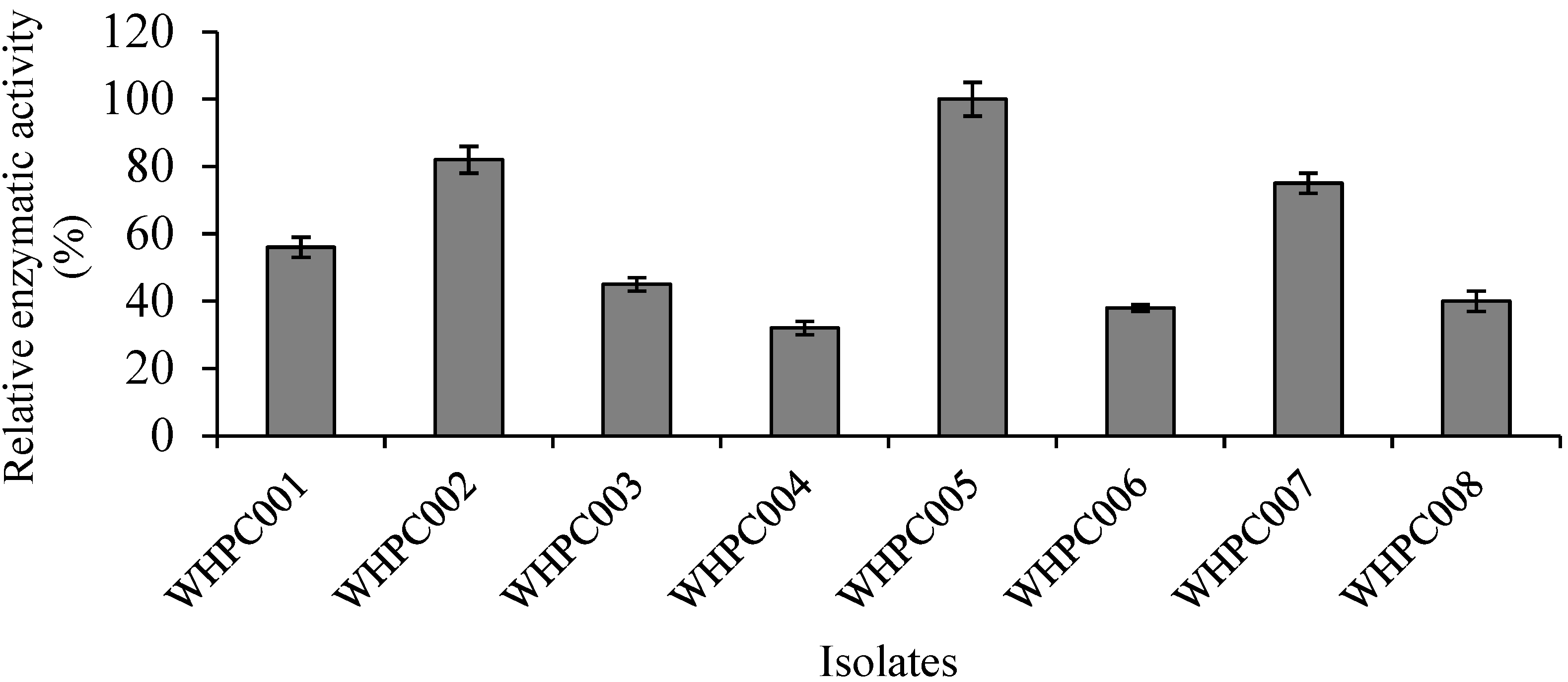
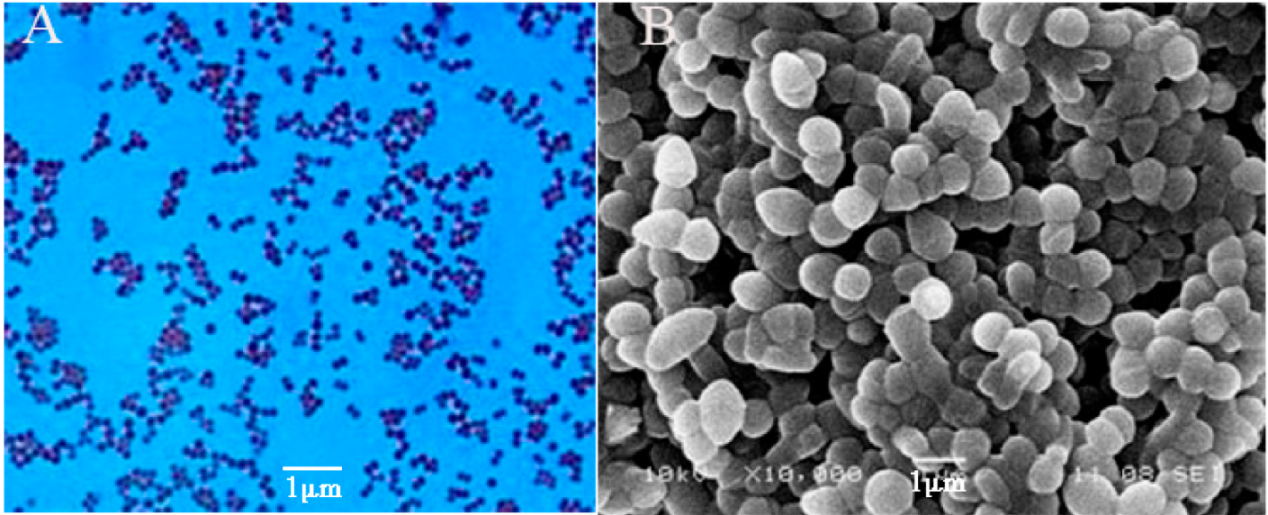
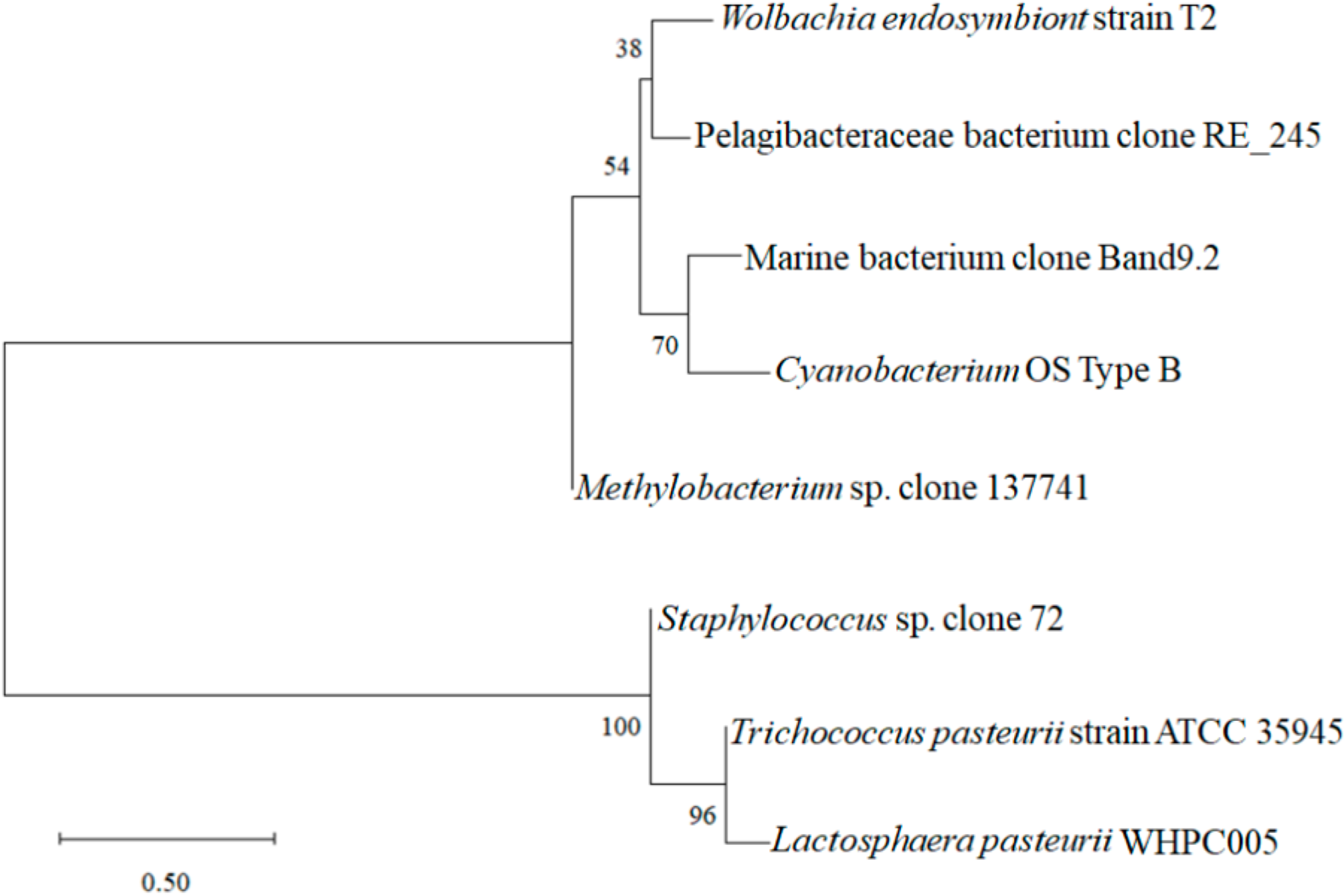

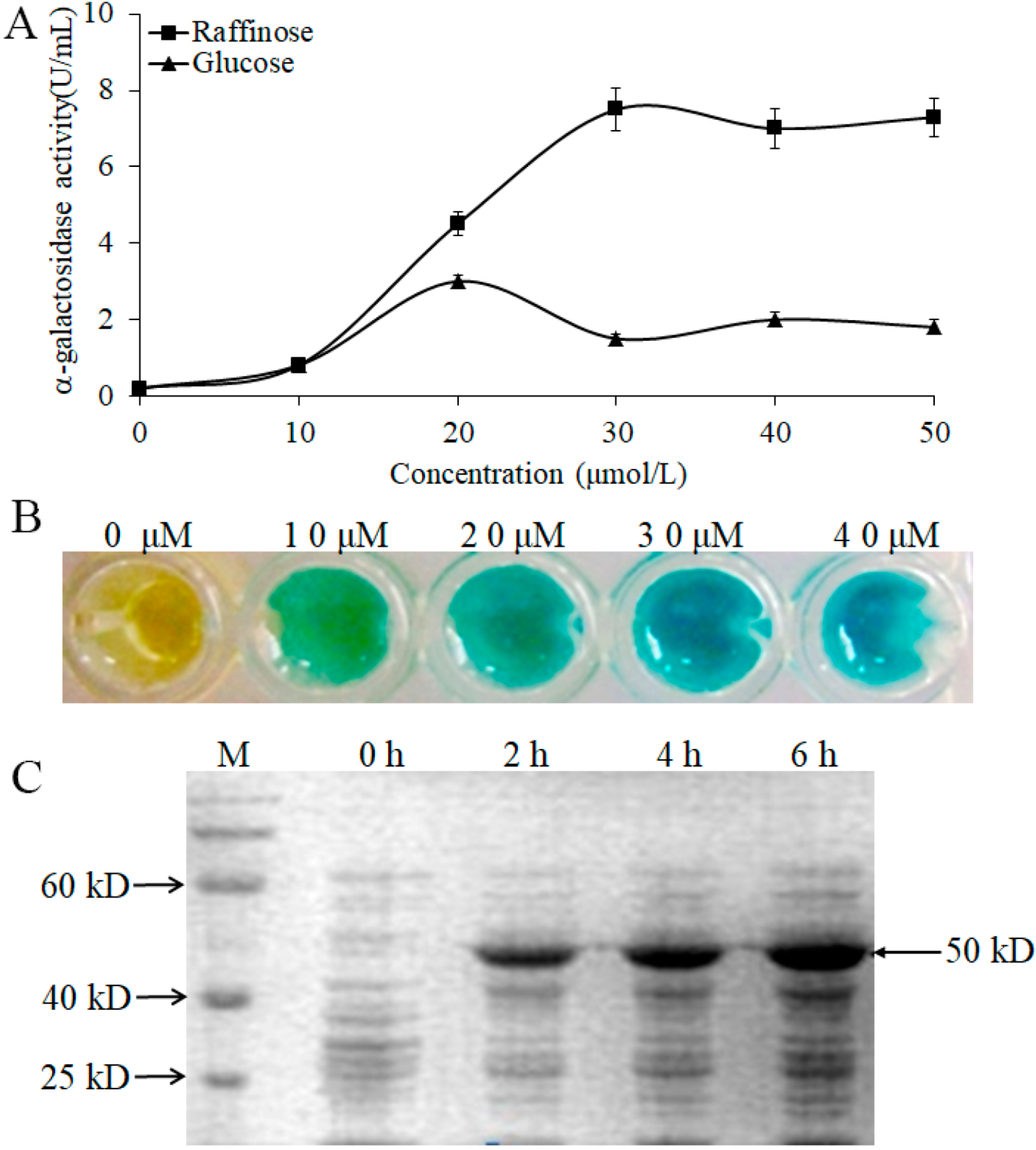
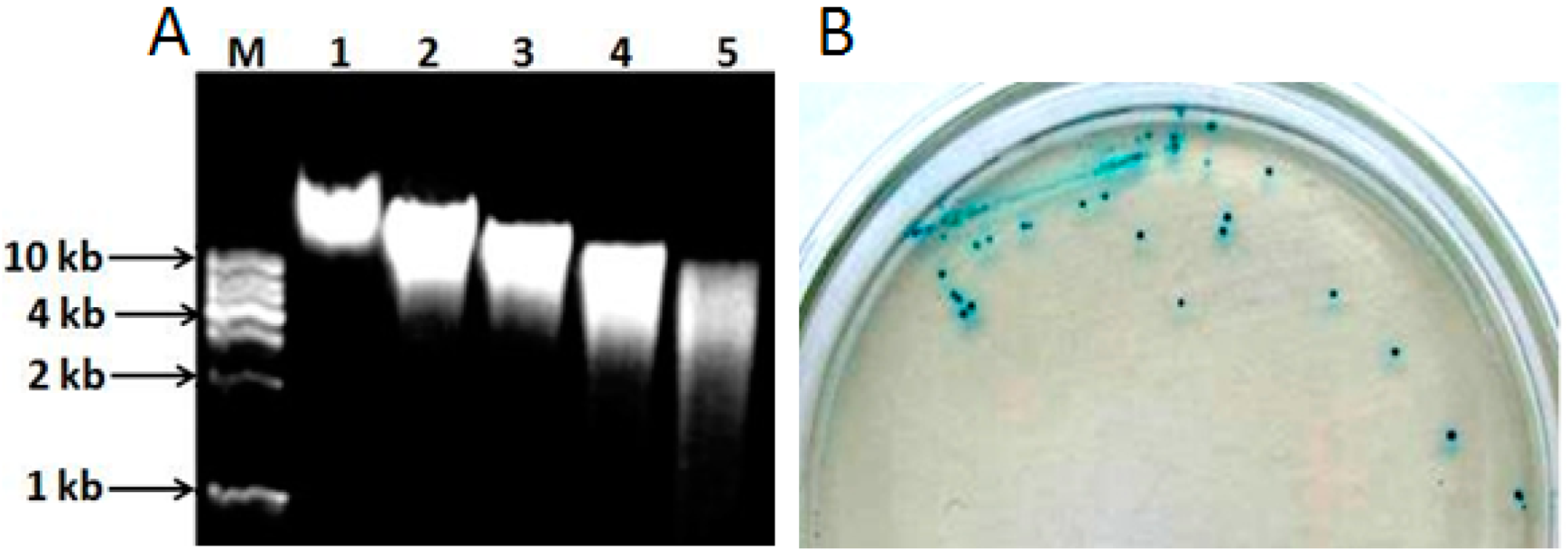
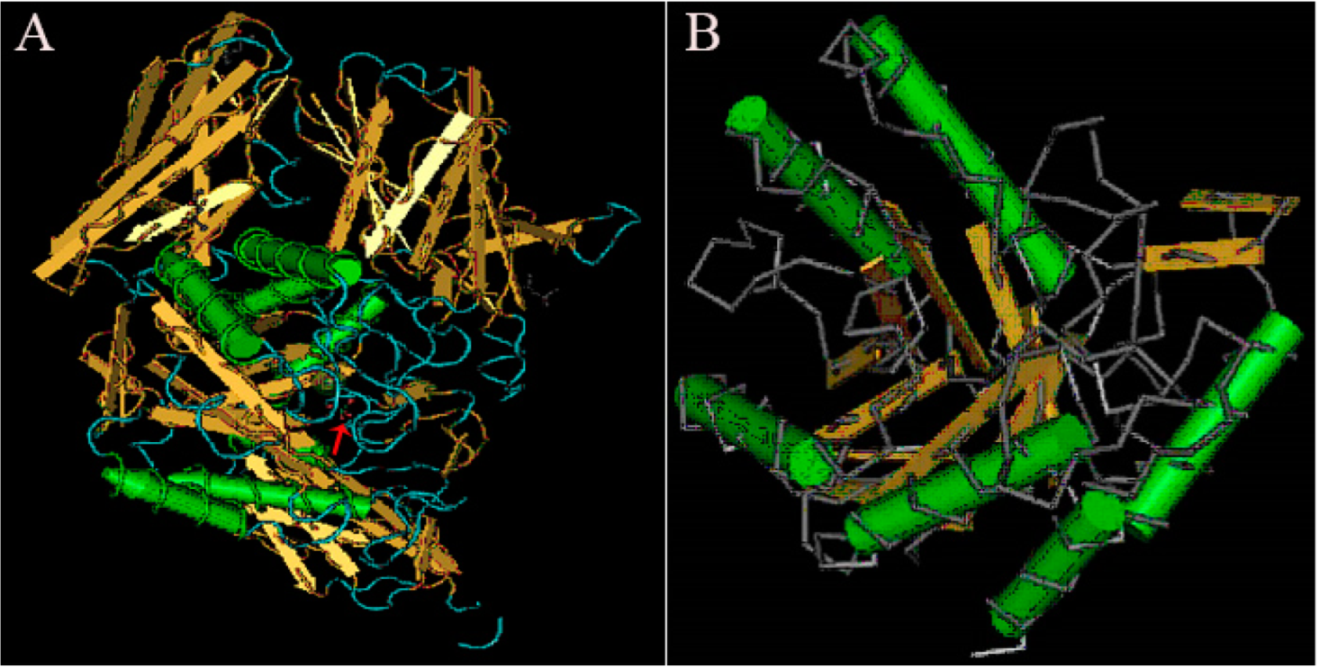
| Metal Ion Concentration | Relative α-Galactosidase Activity (%) | ||
|---|---|---|---|
| 10 mM | 5 mM | 1 mM | |
| K+ | 17 ± 0.05 | 7 ± 0.04 | 23 ± 0.08 |
| Ca2+ | 110 ± 0.50 | 146 ± 0.80 | 132 ± 1.20 |
| Fe2+ | 155 ± 0.60 | 146 ± 0.40 | 128 ± 0.00 |
| Mg2+ | 80 ± 0.30 | 94 ± 0.20 | 122 ± 0.40 |
| Mn2+ | 109 ± 0.60 | 140 ± 1.20 | 114 ± 0.70 |
| Zn2+ | 158 ± 1.60 | 142 ± 0.70 | 126 ± 0.80 |
| Cu2+ | 10 ± 0.02 | 8 ± 0.00 | 110 ± 0. 40 |
| Al3+ | 0 ± 0.00 | 0 ± 0.01 | 12 ± 0.05 |
| Fe3+ | 0 ± 0.00 | 0 ± 0.00 | 0 ± 0.00 |
| Effector Concentration | Relative α-Galactosidase Activity (%) | ||
|---|---|---|---|
| 100 mM | 50 mM | 10 mM | |
| Glucose | 104 ± 0.10 | 136 ± 0.42 | 112 ± 0.30 |
| Fructose | 96.50 ± 0.05 | 98.4 ± 0.03 | 98.5 ± 0.08 |
| Sucrose | 90.48 ± 0.04 | 97.86 ± 0.13 | 98.62 ± 0.09 |
| Lactose | 86.64 ± 0.02 | 92.11 ± 0.12 | 96.38 ± 0.56 |
| Galactose | 32.76 ± 0.01 | 78.15 ± 0.24 | 94.52 ± 0.47 |
| Raffinose | 156.44 ± 0.48 | 192.86 ± 1.36 | 120.47 ± 0.35 |
| SDS | 5.24 ± 0.12 | 7.65 ± 0.24 | 15.68 ± 0.12 |
| EDTA | 85.56 ± 0.24 | 87.39 ± 0.58 | 91.23 ± 0.45 |
| NaCl | 76.11 ± 0.72 | 92.85 ± 0.50 | 94.37 ± 0.69 |
| (NH4)2SO4 | 87.16 ± 0.11 | 95.96 ± 0.35 | 98.44 ± 0.12 |
Publisher’s Note: MDPI stays neutral with regard to jurisdictional claims in published maps and institutional affiliations. |
© 2022 by the authors. Licensee MDPI, Basel, Switzerland. This article is an open access article distributed under the terms and conditions of the Creative Commons Attribution (CC BY) license (https://creativecommons.org/licenses/by/4.0/).
Share and Cite
Zhao, Y.; Zhou, J.; Dai, S.; Liu, X.; Zhang, X. Isolation and Identification of an α-Galactosidase-Producing Lactosphaera pasteurii Strain and Its Enzymatic Expression Analysis. Molecules 2022, 27, 5942. https://doi.org/10.3390/molecules27185942
Zhao Y, Zhou J, Dai S, Liu X, Zhang X. Isolation and Identification of an α-Galactosidase-Producing Lactosphaera pasteurii Strain and Its Enzymatic Expression Analysis. Molecules. 2022; 27(18):5942. https://doi.org/10.3390/molecules27185942
Chicago/Turabian StyleZhao, Yan, Jinghui Zhou, Shan Dai, Xiaozhu Liu, and Xuewen Zhang. 2022. "Isolation and Identification of an α-Galactosidase-Producing Lactosphaera pasteurii Strain and Its Enzymatic Expression Analysis" Molecules 27, no. 18: 5942. https://doi.org/10.3390/molecules27185942




